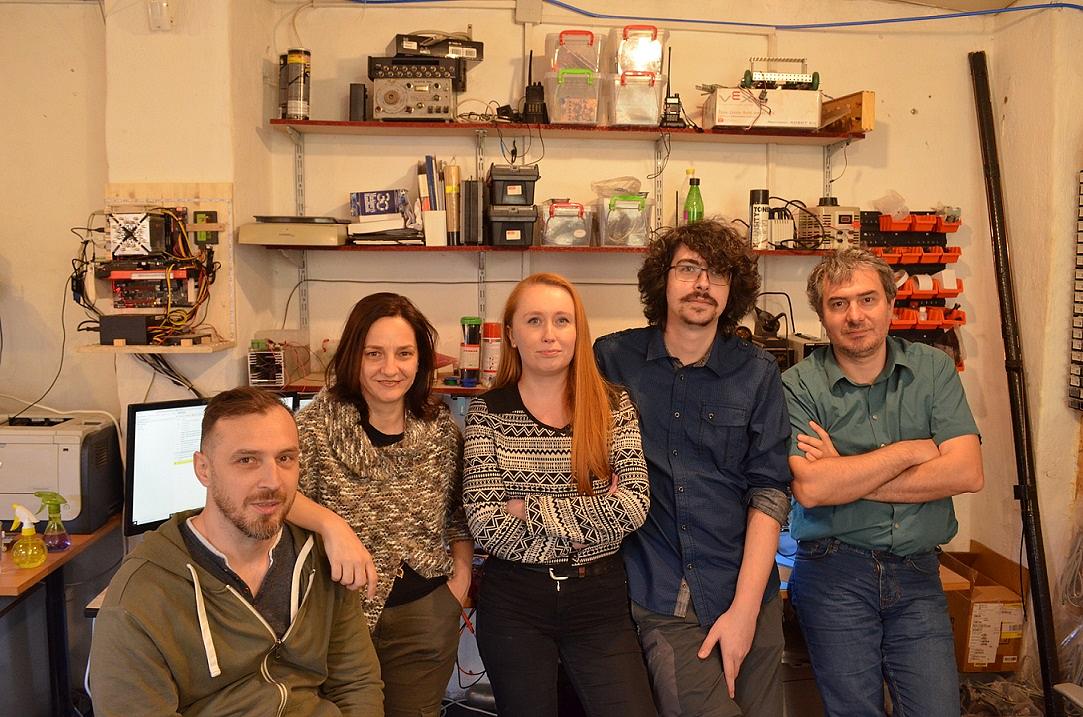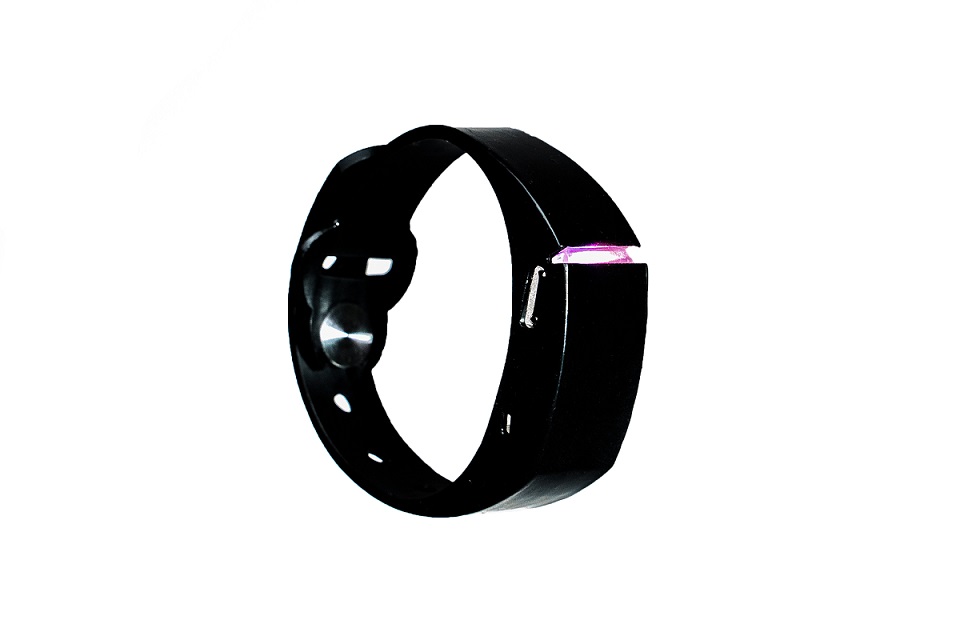Tully: A Romanian startup's solution to help children with ADHD



A volunteering experience brings about the idea
Between 2011 and 2014, Marius and Adina Rus, co-founders of Tully, were in the United States. Marius was doing an MBA, and his wife Adina, who currently teaches economics at Babes-Bolyai University, was volunteering at their daughter's school. One day, she happened to have to cover for one of the counselors working with children with ADHD.
"Children with ADHD, at least there, at the respective school, have counsellors, especially those with a syndrome of medium and high intensity. This is because they need help in keeping things under control. They usually have above-average intelligence, but the condition comes with things like the lack of impulse control. If they want to do something now, they will do it, regardless; they don't think about the consequences. Furthermore, there is another process with ADHD and with an entire series of conditions, generally those placed under the sensor integration disorder umbrella. It manifests as an accumulation of mental stress from various sources, which at one point explodes, and they go through high-intensity episodes. With ADHD, children lose control; in the case of panic attacks, people experience the respective attack; there are all sorts of similar things but with different particularities," Rus (pictured first left in opening photo), the CEO of Tully, explains.
Besides establishing a rapport with the children, the counselors pay attention to when kids become agitated, and help them re-focus. "They touch them on the shoulder or the hand and tell them to quiet down, that the break is in ten minutes, draw their attention back to the problem, the classroom. And it generally helps," he explains.
While covering for a counselor who had fallen ill, Adina discovered she enjoyed working with children with ADHD, and she had good results, he recalls. The school's director placed her in a training program, and she went on to work in all the three schools in their school district. "It was an area so interesting for her, and the benefits she felt in helping the children were so great, she decided to make this a second career."
Upon returning to Romania, she enrolled in and graduated from the psychology faculty and did a masters in child development, all while carrying on with her teaching career – she holds courses in international investment and behavioral economics at Babes-Bolyai University (UBB) in Cluj-Napoca.
Meanwhile, Marius was working with startups, many tech ones, as an adviser. In 2016, while Adina was working on her MA dissertation, they started talking about its content and first explored the idea of Tully, the device they developed in the meantime.
Looking at what counselors working with children with ADHD do, they realized that a small portion of their work, the one entailing supervising the child and alerting them to when a flare approaches, could be taken over by an electronic device. The advantage: children would be offered long-term support, when it is needed: at school, while they do their homework and so on. At the same time, it could be offered to all children who need it as counselors can be few and expensive. "In Romania, they are very few. In the States, they are one or two per school in the school districts that can afford to pay them, not everywhere," Rus explains.
After the initial idea took shape, they started looking for the technical talent who would help them develop it. "We had the idea, the psychology and strategy [background], the part about how to take it to market, but we were missing the product."
Finding the right co-founders was the first challenge, and it took several tries before establishing the current team. The company started working in 2018, when the team was formed. They received their first financing, and were completely bootstrapped until 2020. Last year, they raised an angel-type financing round and also received a first European grant, which they used to finalize the first completely functional prototype and validate the technology. They also did a project together with the Psychology Faculty of UBB and worked with around 20 children. "We managed to raise sufficient data to show the information the sensors collect, the way our device processes the information and the results we obtain correlate highly with the children's behavior, and it can forecast such a flare."

How does Tully work?
The bracelet-like device captures parameters such as heart rate, blood oxygen level, skin conductance (SC), temperature. Movement-based sensors measure the device's movement and add them up into an agitation score the startup created. Depending on the evolution of this score, it can show the probability of a flare occurring. When this happens, Tully vibrates, and the child is alerted that it is time to quiet down.
A calming phase follows so if they need support, because many times only the vibration is not enough, they can go through a small breathing or relaxation exercise they learned with the therapist. In this case, the device also guides them through the exercise because it continues to use the sensors; it is a biofeedback process where the interaction with the child changes depending on their state of agitation, he explains.
The device has two interaction versions available: vibration and light based. The vibrations can be rarer and of lower intensity to give the child confirmation that they are going in the right direction. The light-based version goes from a very intense, red light to a green one or the light completely turns off. "The light one offers an easier interaction but it more difficult to use because it is not personal enough, it is visible, and in the classroom, it is more difficult to have the light-based interaction."
The device also offers, with the parents' agreement, a wealth of information to psychiatrists, psychologists, or therapists. They can do with them two things they weren't able to do before, Rus explains. On the one hand, they can use the data to discuss a positive situation. So far, therapists had the option of talking with the children and finding out what had happened when an emotional flare occurred. With the data provided by the device, they can compare flares with events when the child managed to calm themselves and work on how this can be replicated. At the same time, they can use the data to evaluate how well the therapy works. Instead of an evaluation based only on interviews and questionnaires, this can be done also using the data the device provides, including agitation levels, how many events occur, how intense they are, or how long it takes the child to reach a complete level of calm.
From consumer electronics to medical device
The team is getting ready to launch a crowdfunding campaign for the device, allowing those interested in purchasing it. Tully is currently positioned in the consumer electronics category, but the team plans to apply for a medical device certification, which is a lengthier process, the co-founder explains. "This is based on a set of clinical trials that last about six months and are quite costly because they need to be done in a hospital, under professional supervision from specialized organizations." The startup decided to start working, make the device available and, at the same time, begin the process of receiving the medical device certification.
The device is currently in the phase of a final commercial prototype. Until reaching production, some pre-production preparation is done, including the planning of a large-scale production prototype and finding the manufacturer. "We assume that sometime within three-four months after we close the crowdfunding campaign, we can start delivering the device and afterwards, we will be able to be on the market with the devices completely commercially. We can say somewhere around the middle of next year we will be on the market fully," he says.
The company is looking at a wider distribution, which would include Romania but would mainly focus on Europe and the US, where the recognition and diagnosis rate of ADHD is higher. In the first phase, while de device is in the consumer electronics category, parents would be the ones purchasing it, but therapists would be able to recommend it. After the medical device certification is obtained, a range of options opens as to who can purchase it. "Once we have a medical certification, probably sometime around 2023, it will be different because if it is included in the medical reimbursement plans, it can be offered on prescription. It depends on the insurance system," he explains. He gives the example of Spain, where pediatric hospitals where ADHD is treated could be the ones purchasing the device, and the children would only use them.
In the meantime, for next year, the startup plans to focus on the one hand on getting to market, doing the preparation for manufacturing, start working and delivering, and on the other on the medical certification.
Hardware is hard
Looking back at the entrepreneurial experience this far, he mentions a phrase he says they felt first-hand: "Hardware is hard." "It was an experience with challenges and bright parts because the entrepreneurial environment is continuously developing in Romania. Including now, if we look at how things were in 2017, even 2018, we are doing much better. In our case, as I was saying, it was difficult to find the right team." The startup now has a team of six people: four co-founders and two employees. It raised the first financing in 2020, after doing the first proof of concept in 2017. "It was a larger device, and it could detect a rise in stress levels, which can be done with any smart device."
He explains that with hardware, everything takes longer. If with a software product, a bug can be identified and the changes made within days, with a hardware item, changes or improvements to the device's architecture take significantly longer. It was what happened during a process to improve the device, when its CPU was changed, to a better, faster version. "The results suddenly decreased, and we couldn't tell what was going on. We couldn't tell why the reliability and accuracy of the readings were lower than with the previous version." The team had to go through a lengthy research process and discover in the microprocessor's manual a mention that hinted at a possible conflict between the processor and one of the sensors they were using. Once the error discovered, they had to wait a few weeks for new parts to be delivered.
"This is what happens with hardware; it lasts longer, and it is pretty expensive. But the rest worked out. As we started getting results, had the first device, had the first results that it worked, the first reactions from users, from the parents, it became easier and easier to move forward and we received several confirmations."
In 2019, Tully took part in the GE Health Venture Lab. "We had a first financing round raised in 2020, we took part in various competitions. We ranked third in the first accelerator we took part in in 2019, in Budapest. Only the first two places were awarded, but it was a confirmation that we are doing something valuable, that is worth pursuing." Last year, Tully took part in the Health RIS Innovation Call and worked with the Psychology Faculty of UBB to validate the technology. This year they were involved in a project to improve the device's algorithms. The team integrated into the final version of the device machine learning algorithms that help the bracelet learn by itself when the child is calm and when agitated, with the requirement that it is worn in quiet periods as well. Also this year, they attended the Innovators for Children, the program run by Impact Hub Bucharest, the AI-focused program of Techcelerator, and, at the end of October, won the EIT Health InnoStars Awards Grand Final.
(All photos courtesy of Tully)
simona@romania-insider.com